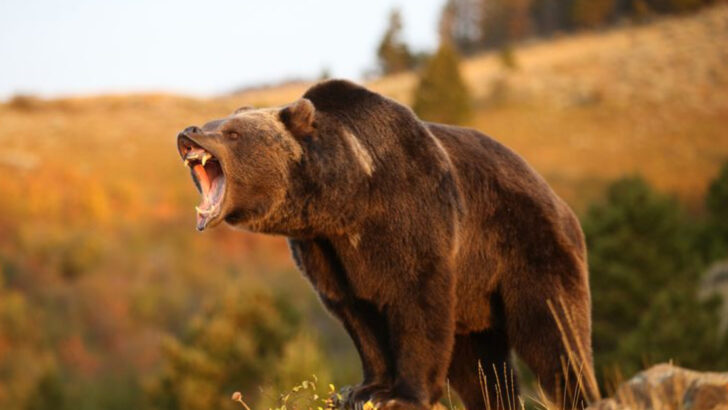The grizzly bear doesn’t walk into a room—it owns it.
This beast can crush bones with a single bite, outrun a horse in short bursts, and still manages to look like a living teddy bear… if that teddy bear could flip your car.
It’s not just the claws, the size, or the stare that makes the grizzly legendary. It’s the attitude. The sheer wild presence. The way it rules the forests and mountains like nature’s original heavyweight champion.
You’ve heard of them, maybe dreamed of spotting one from a very safe distance—but how much do you really know about this mighty icon? These facts go beyond the roar and into the raw power, quirks, and secrets of North America’s most famous bear.
Gigantic Stature
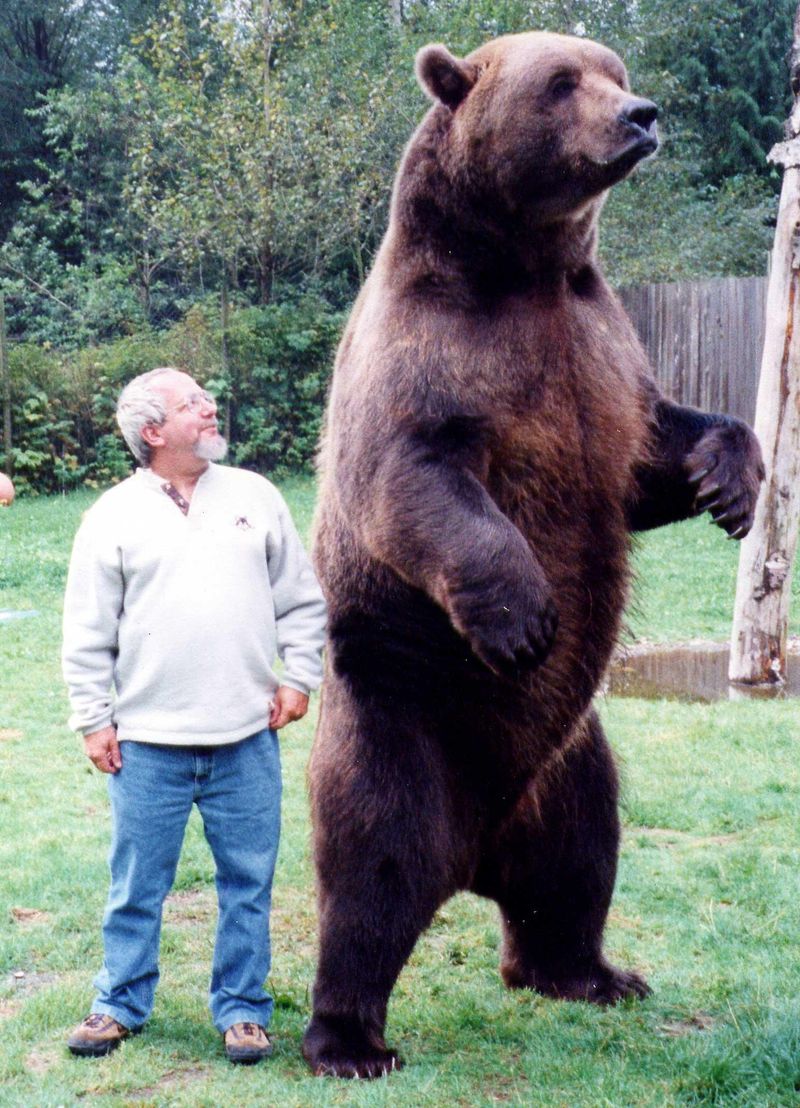
The sheer size of grizzly bears is truly awe-inspiring. Male grizzlies can weigh up to 600 pounds, making them formidable opponents in the wild. Their height, when standing on their hind legs, can reach over 8 feet, towering above most humans. This colossal stature is not just for show; it plays a crucial role in their survival. Grizzlies use their size to intimidate rivals and protect their territory. Despite their bulk, these bears can move with unexpected grace and speed, making them efficient hunters.
Remarkable Speed
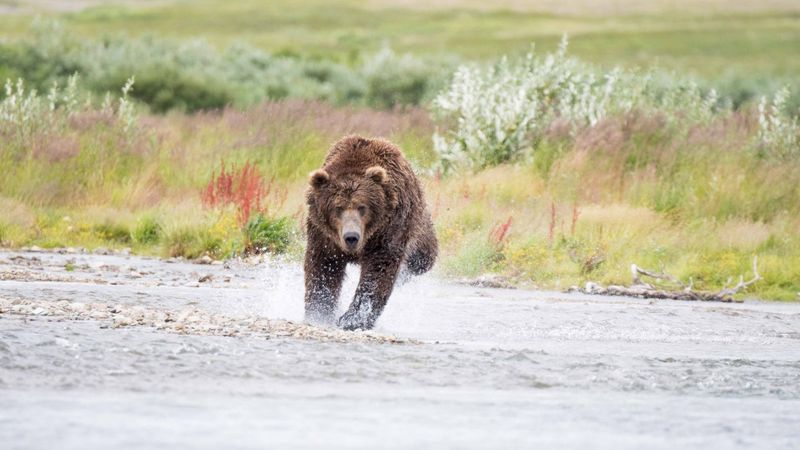
Despite their bulky appearance, grizzly bears are incredibly fast. They can gallop up to 35 miles per hour, a speed that rivals that of a horse. This remarkable agility is essential for catching prey and evading threats. Whether they’re hunting for food or simply moving through their territory, grizzlies exhibit an impressive combination of speed and power. Witnessing a grizzly in full sprint is a reminder of the raw, untamed energy that these mighty animals possess. Their speed is a key element of their survival strategy.
Powerful Claws
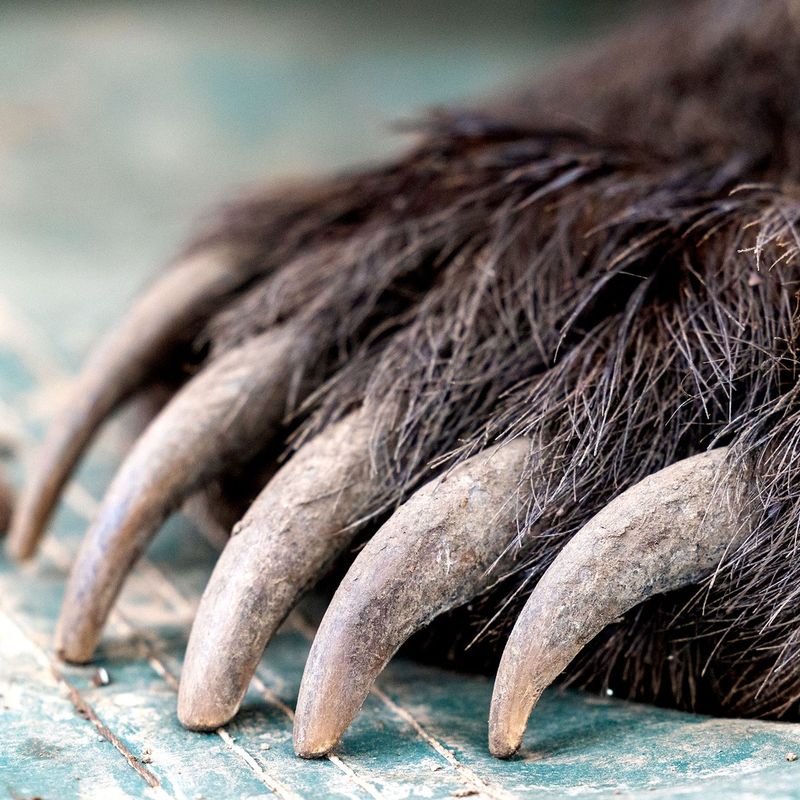
Grizzly bears are armed with claws that can grow up to 4 inches long. These powerful tools are vital for digging, hunting, and climbing. The claws are curved and razor-sharp, allowing grizzlies to efficiently catch fish or dig for roots. This feature not only aids in their dietary habits but also serves as a formidable defense mechanism against threats. The sight of a grizzly’s claws is enough to deter most would-be challengers. Their claws are an essential part of their mighty arsenal.
Communicative Roars
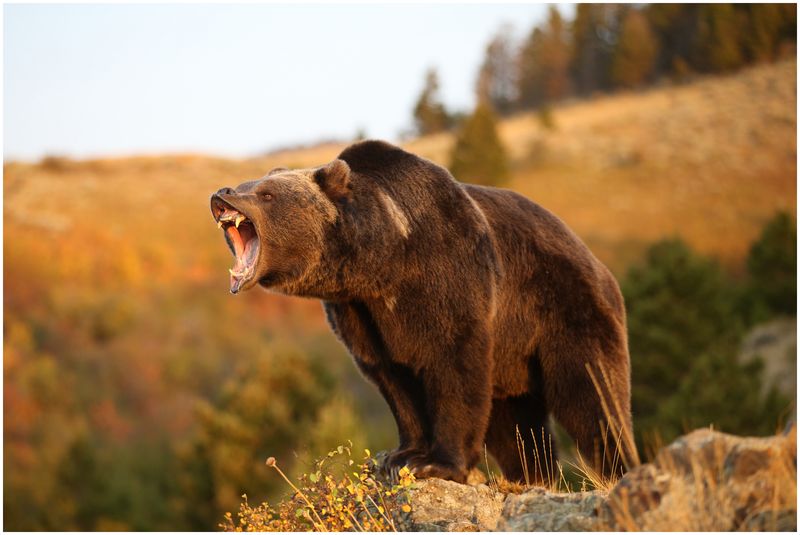
Grizzly bears are known for their thunderous roars, a sound that can carry over large distances. These vocalizations are used to communicate with other bears, whether to assert dominance, signal danger, or attract mates. The roar of a grizzly is not just a call; it’s a powerful expression of presence in their environment. Hearing their roar is an experience that echoes the might of these magnificent creatures. It’s a reminder of their place at the top of the food chain.
Adaptable Diet
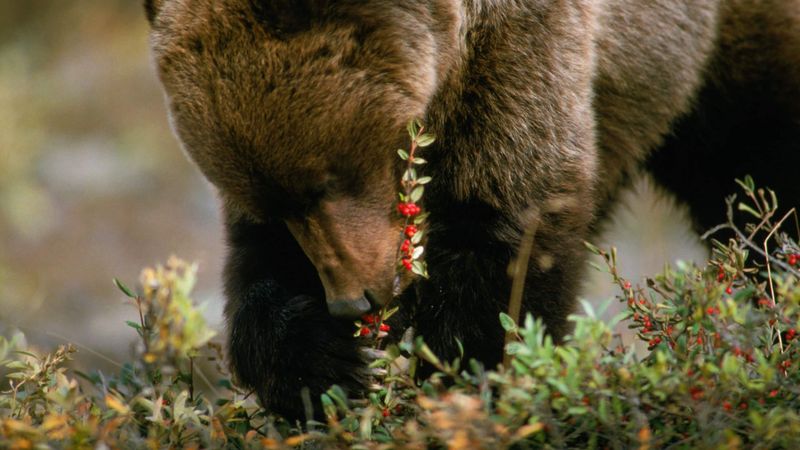
Grizzly bears are omnivorous and have an adaptable diet that changes with the seasons. They consume a variety of foods, from plants and berries to fish and small mammals. This dietary flexibility is one of their greatest strengths, allowing them to thrive in diverse environments. During salmon spawning season, grizzlies feast on fish, building up fat reserves for the winter. Their ability to adjust their diet according to availability ensures their survival in the wild.
Impressive Intelligence
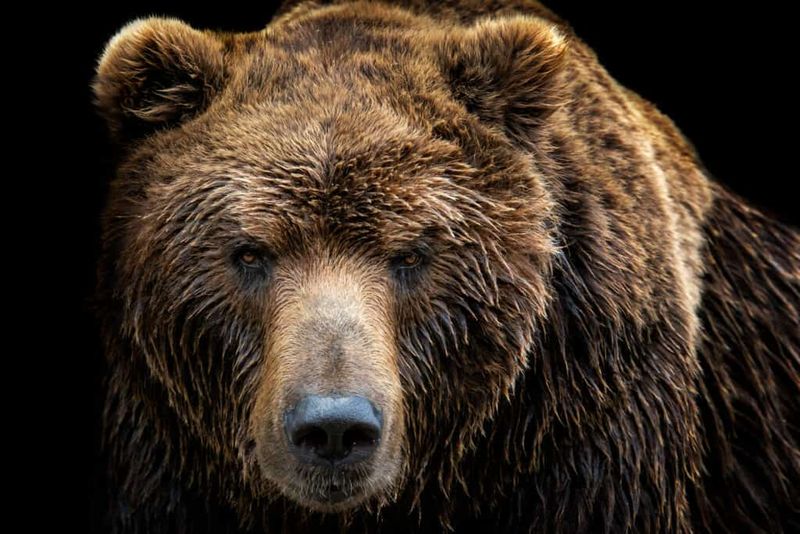
Grizzly bears are not just powerful—they’re smart too. They have been observed using tools, such as rocks, to access food and display problem-solving abilities. This intelligence is crucial for navigating their complex environments and adapting to challenges. Their cognitive skills are evident in their hunting techniques and ability to remember food sources. Grizzlies demonstrate a level of intelligence that adds to their mystique and might in the animal world.
Hibernation Strategy

Grizzlies have a unique approach to surviving harsh winters through hibernation. During this period, they enter a state of deep sleep, reducing their metabolic rate to conserve energy. They can go without food and water for months, relying on fat reserves built during the year. This adaptation is vital for enduring the cold months when food is scarce. The hibernation strategy of grizzly bears showcases their adaptability and resilience in the face of adversity.
Maternal Instincts

Mother grizzly bears are fiercely protective of their young. They raise their cubs with care, teaching them essential survival skills. The bond between a mother and her cubs is strong, with the mother often sacrificing her safety for theirs. This maternal instinct is a critical aspect of grizzly bear life, ensuring the next generation continues to thrive. Observing a mother bear with her cubs is a heartwarming sight that highlights the nurturing side of these mighty creatures.
Solitary Lifestyle
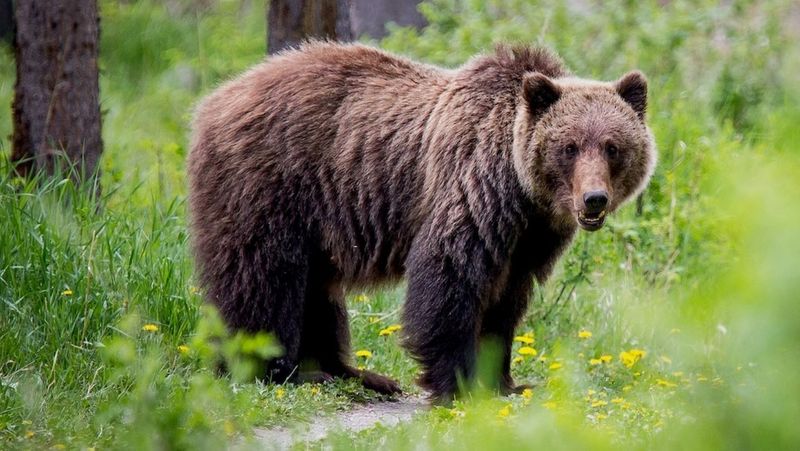
Grizzly bears are solitary animals, often seen roaming their vast territories alone. This independence is a key trait, as it allows them to dominate their environment without competition. While they may share spaces during feeding times or mating season, grizzlies generally prefer solitude. Their solitary lifestyle is a testament to their strength and ability to fend for themselves. It also reduces conflict over resources, ensuring their survival in diverse landscapes.
Keen Senses
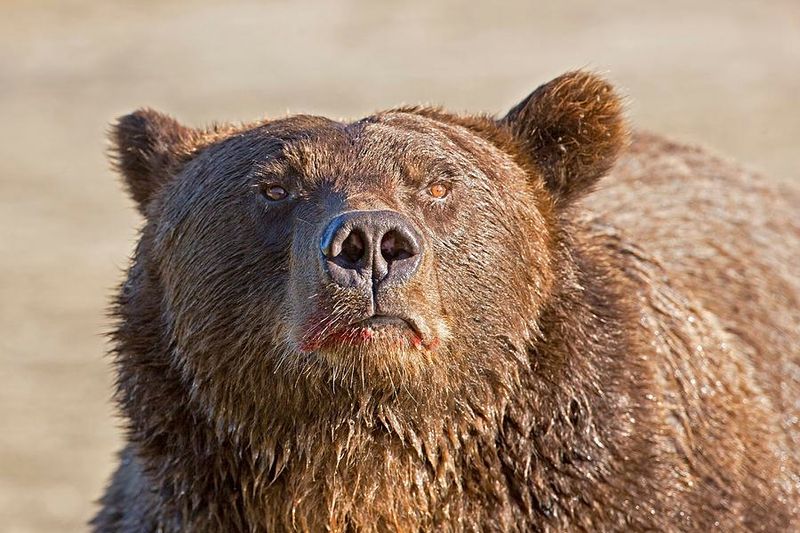
Grizzly bears boast highly developed senses, particularly their sense of smell, which is one of the strongest in the animal kingdom. They can detect scents from miles away, whether it’s a potential mate, prey, or danger. This keen sense of smell is crucial for their survival, aiding in hunting and avoiding threats. Their acute senses make them formidable predators and efficient foragers. The sensory prowess of grizzlies adds to their majestic presence in the wild.
Distinctive Hump
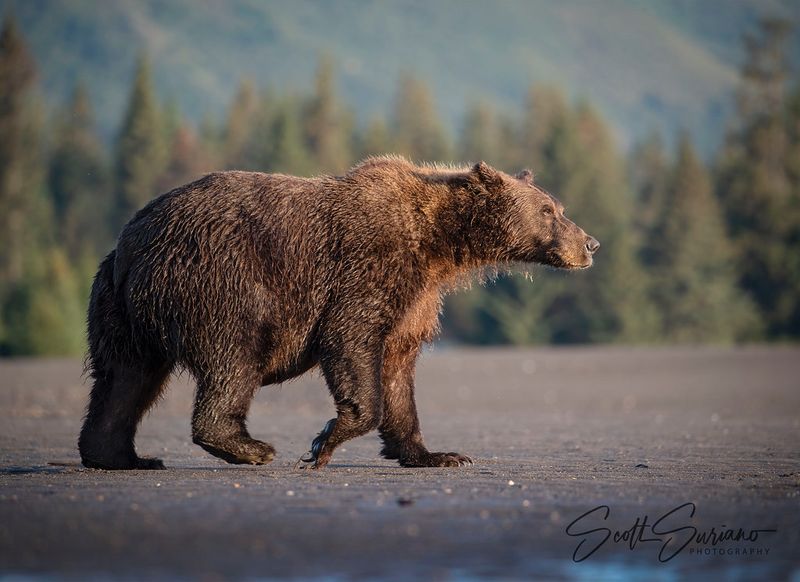
One of the most distinctive features of a grizzly bear is the prominent hump on its shoulders. This hump is composed of powerful muscles that give grizzlies the strength to dig and hunt. It sets them apart from other bears and speaks to their evolutionary adaptations for survival. The hump is not just a physical characteristic; it’s a symbol of their power and dominance. This unique feature is a defining aspect of the grizzly bear’s mighty persona.
Diverse Habitats
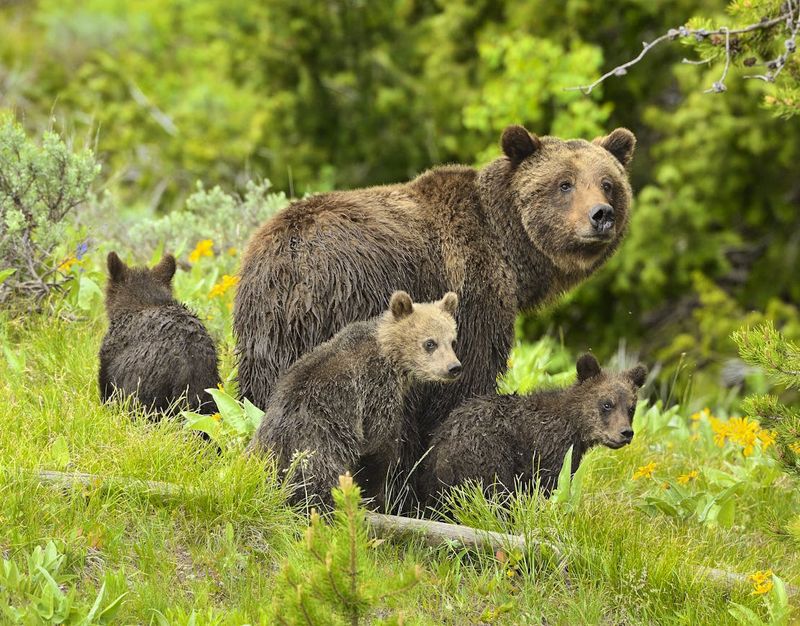
Grizzly bears are versatile creatures that inhabit a range of environments, from dense forests to alpine meadows. Their ability to adapt to various habitats is a testament to their resilience. Each environment offers unique challenges, which grizzlies overcome with their strength and intelligence. This adaptability ensures they can find food and shelter across different terrains. The diverse habitats of grizzly bears highlight their ability to thrive in the wild.
Longevity
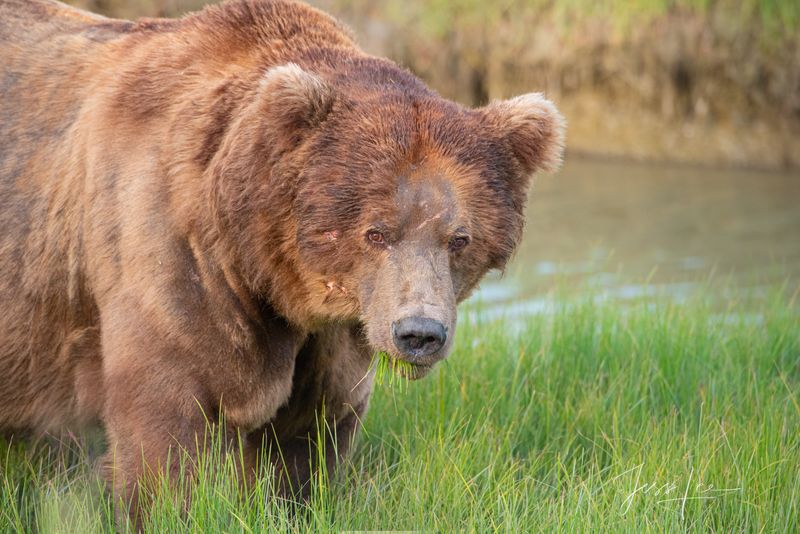
Grizzlies can live up to 25 years in the wild, with some reaching even older ages in captivity. This longevity is a result of their robust health and adaptability. During their lifetime, they face numerous challenges, yet their resilience ensures they endure. Aging grizzlies often carry the scars of their experiences, each telling a story of survival and strength. Their long life span is a remarkable aspect of their species, showcasing their enduring presence in nature.
Strong Swimmers
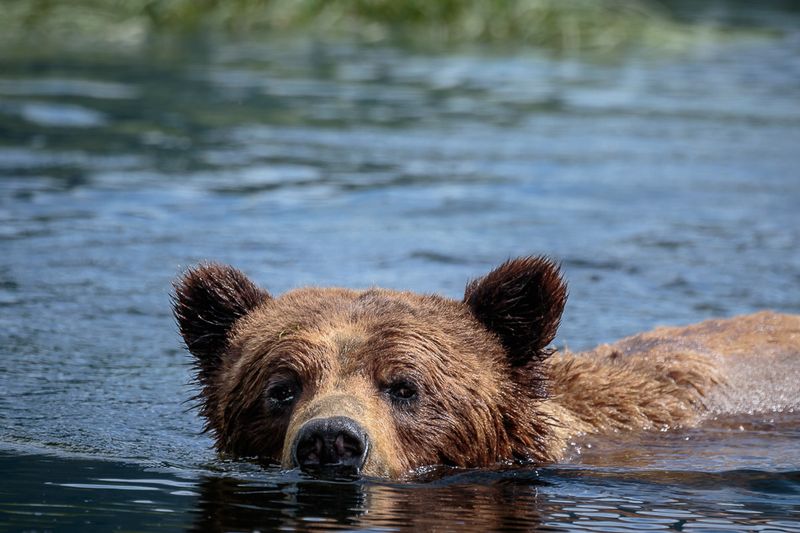
Grizzly bears are powerful swimmers, able to cross rivers and lakes with ease. This skill is particularly useful during salmon runs when they catch fish in the water. Their swimming ability enables them to access different parts of their territory, especially in regions with abundant water bodies. Watching a grizzly bear navigate through water highlights their versatility and command over their environment. Swimming is just another example of their impressive capabilities.
Role in Ecosystem
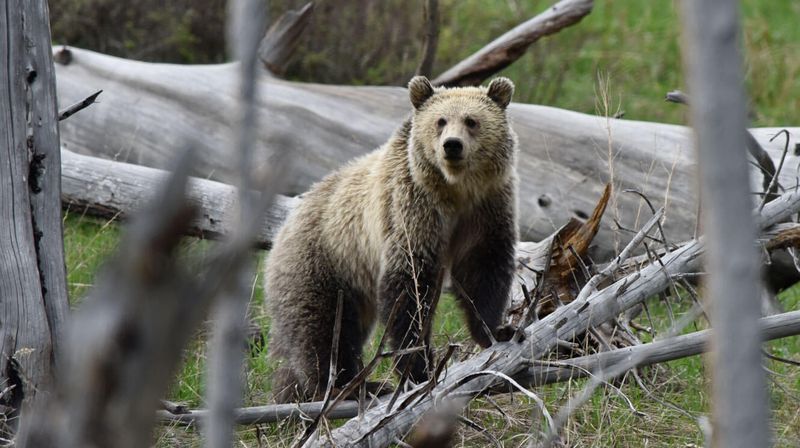
Grizzlies play a crucial role in their ecosystems, influencing the environment and other species. As apex predators, they help control populations of prey animals, maintaining balance in the food chain. Their foraging habits also aid in seed dispersal, contributing to plant growth and diversity. The presence of grizzly bears is an indicator of a healthy ecosystem, showcasing the intricate connections between species. Their role underscores the importance of preserving their natural habitats.
Symbolic Significance
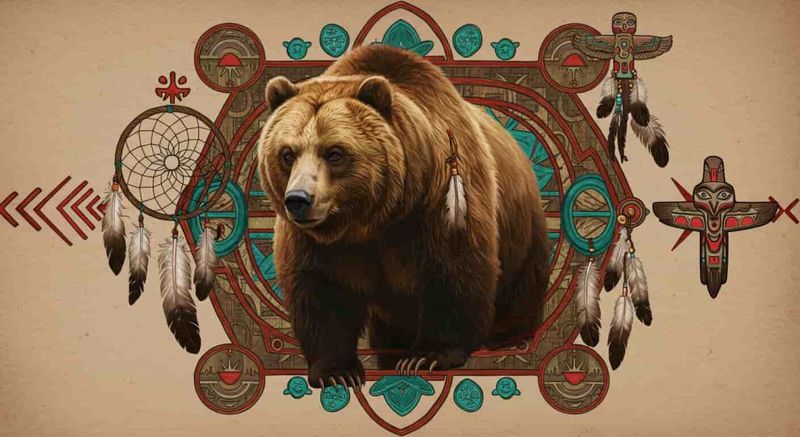
Beyond their physical attributes, grizzly bears hold symbolic significance in various cultures. They are revered in Native American traditions as symbols of strength and wisdom. This cultural importance is reflected in art, stories, and ceremonies, where grizzlies are honored for their might and resilience. The bear’s image is a powerful motif, representing the connection between humans and nature. This symbolism adds a layer of depth to the understanding of these magnificent creatures.
Conservation Efforts
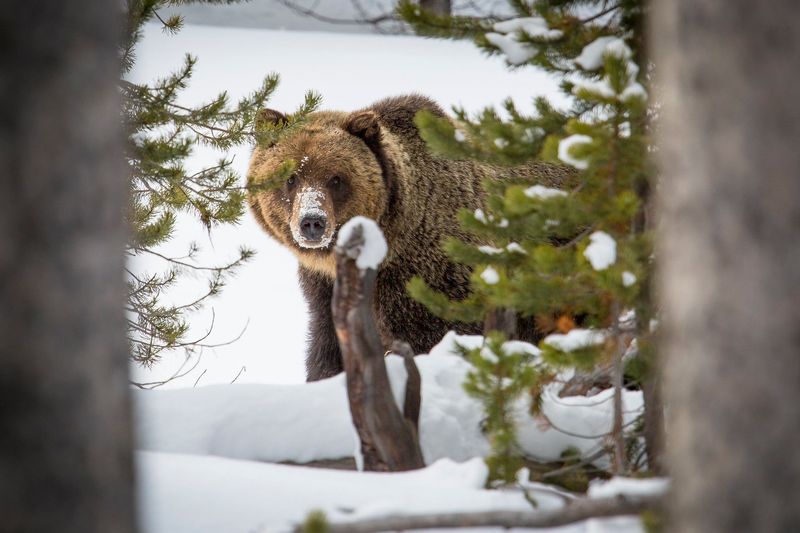
Efforts to conserve grizzly bears are vital for their survival. These initiatives focus on protecting habitats, preventing poaching, and ensuring coexistence with human populations. Conservationists work to raise awareness about the importance of grizzlies in the ecosystem. These efforts aim to secure a future where grizzly bears continue to thrive in the wild. The success of conservation programs highlights the importance of collective action in preserving our natural world.

